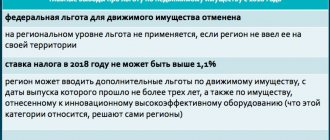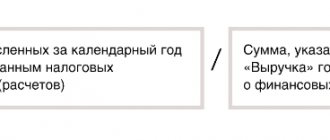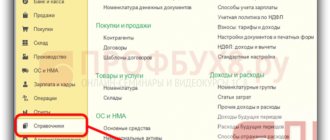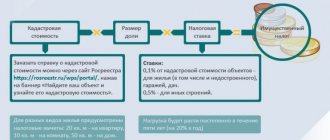Often, to ensure the property security of a business and the efficient use of property in a Group of Companies, redistribution of assets is required. The economic meaning of the transfer of property in a holding structure is objectively different from the sale or other form of its transfer to third parties, because in essence we are transferring assets from one “our pocket” to another. Accordingly, the taxation of these transactions has its own characteristics: tax legislation provides for tax-free transfer of assets within holding structures.
The practice of applying these norms is almost established. Nevertheless, there are some fundamental nuances that affect the success of the entire procedure for transferring assets, including taking into account changes made to the Tax Code of the Russian Federation.
Let us remind you that tax-free transfer of assets between related companies can be different and includes, for example, such methods as contribution to the authorized capital, reorganization in the form of spin-off, etc.
Today we will focus on one of these methods - contributions to property without increasing the authorized capital of the organization
when a participant (shareholder) transfers certain benefits to his company (cash, shares (shares) in other legal entities, real estate, etc.) to improve its financial and/or property condition. At the same time, the authorized capital does not increase, and the nominal size of the participants’ shares does not change.
The civil law grounds for contributions to property are Article 66.1 of the Civil Code of the Russian Federation, Art. 27 of the Law “On LLC”, art. 32.2 of the Law “On JSC”.
If the charter of the receiving party is standard and does not contain detailed norms, then contribution to the property is possible only in money and only in proportion to all participants (shareholders). In an LLC, the decision on a contribution to property is made by no less than 2/3 of the votes. In a joint stock company, making a contribution is possible on the basis of an agreement approved by the Board of Directors, or by decision of the general meeting of shareholders.
At the same time, the Tax Code provides for two preferential mechanisms that make it possible to exempt inherently gratuitous deposits from taxation:
1. Gratuitous transfer of property and property rights on the basis of subclause 11, clause 1, article 251 of the Tax Code of the Russian Federation. It itself is possible in two forms:
- transfer of property in favor of an organization whose authorized capital directly and/or indirectly consists of at least 50% of the contribution of the transferring party (“mother”, “grandmother” or an individual participant (shareholder);
- "daughter's gift" This is a transfer from a subsidiary to the parent company, which directly and/or indirectly owns more than 50% of the authorized capital of the subsidiary.
2. Contribution to the property of a business company or partnership from its participant or shareholder. pp. 3.7 clause 1 art. 251 NK
In other words, the Tax Code differentiated these grounds, including by the time of their appearance in the law, giving them some specific application features.
Let's look at the mechanisms in detail.
Gratuitous transfer of property under clause 11, clause 1 of Art. 251 Tax Code of the Russian Federation
Firstly, there may be property and, from November 23, 2020, property rights.
Cash refers to property, non-cash money refers to property rights. Art. 128 Civil Code of the Russian Federation
Exemption from taxation in accordance with paragraphs. 11 clause 1 art. 251 of the Tax Code also applies to debt forgiveness. Resolution of the Arbitration Court of the Central District dated January 27, 2015 in case No. A23-1634/2014
Secondly, it is impossible to transfer them to third parties within one year from the date of receipt of property, property rights (except for funds).
In other words, significant restrictions are imposed on the use of property: you cannot sell it, rent it out, or otherwise dispose of the received property, as well as assign property rights. The logic of the legislator is clear - some kind of assistance from a participant in his company is exempt from taxation, because he transferred the property (property right) for its use, and not for renting or assignment.
The undoubted “trick” of this tax-free basis is the opportunity to make a contribution to the property not only from a direct participant, but also from a person who has an indirect share of participation through an intermediate company. For a contribution to be exempt from taxation, the share of indirect participation must also be at least 50%.
To calculate the share of indirect participation, it is necessary to multiply the shares of direct participation in each organization along the ownership chain. For example:
Debt forgiveness or offset of mutual claims: what to choose?
So, what main conclusions can be drawn by looking at paragraphs. 3.7 clause 1 art. 251 of the Tax Code of the Russian Federation?
This rule does not establish a condition for exemption from income tax, firstly, the presence of such a purpose of the contribution as increasing the net assets of the company, and secondly, restrictions on the minimum share of the shareholder in the authorized capital of the company (as previously in paragraph 3.4) .
The main condition for exemption from income tax is compliance with the procedure established by the civil legislation of the Russian Federation.
Today, the question is relevant: is it legal for a company not to impose income tax on a contribution in the form of forgiveness of debt by the founders (participants), which the company previously incurred to them?
When answering this question, the Ministry of Finance limited itself to only listing the above-mentioned norms of the Tax Code and the Civil Code of the Russian Federation (see letters dated 04/25/2018 No. 03-03-06/1/27855, dated 04/13/2018 No. 03-03-06/1/24606).
Taxpayers in practice also use this option, as discussed in the Letter of the Federal Tax Service of Russia dated March 13, 2019 No. SD-3-3 / [email protected] : the sole shareholder of a joint-stock company has the right to claim against the company under a loan agreement and a supply agreement. Based on Art. 32.2 of the Law on JSC, the sole shareholder entered into an agreement with the company to make a contribution to the property of the company without increasing the authorized capital. As a contribution to the company's property, funds were made by offsetting mutual homogeneous claims of the company to claim the contribution and the shareholder under loan and supply agreements, including accrued interest. Will the contribution of the sole shareholder relate to income not taken into account when determining the income tax base, based on paragraphs. 3.7 clause 1 art. 251 of the Tax Code of the Russian Federation?
Unfortunately, the Federal Tax Service, like the Ministry of Finance in previous letters, outlined only legislative norms, without giving a specific answer to the question posed.
To figure out whether it is possible to exempt a contribution from taxation when making it by forgiving a debt or offsetting mutual claims, let us turn to the provisions of the Civil Code.
Article 415 of the Civil Code of the Russian Federation provides for an independent method of terminating an obligation - debt forgiveness, which involves the termination of an obligation by the creditor releasing the debtor from his obligations. Debt forgiveness implies the gratuitous release of the debtor from his obligations and does not imply the provision of any reciprocal provision to the creditor by the debtor.
By virtue of clause 2 of Art. 423 of the Civil Code of the Russian Federation, a gratuitous agreement is recognized as an agreement under which one party undertakes to provide something to the other party without receiving payment or other counter-provision from it.
According to paragraph 1 of Art. 407 of the Civil Code of the Russian Federation, the obligation is terminated in whole or in part on the grounds provided for by the Civil Code, other laws, other legal acts or an agreement. In particular, Art. 410 of the Civil Code of the Russian Federation provides that an obligation may be terminated in whole or in part by offsetting a counterclaim of a similar nature, the due date of which has come or the due date of which has not been specified or is determined by the moment of demand.
In other words, the company has an obligation to the participant to repay the loan, and the participant has an obligation to the company to make a contribution (it arose from the decision of the general meeting of participants). The parties offset the homogeneous counterclaim: the company repaid the loan debt, and the participant repaid the contribution debt.
So, we believe that non-inclusion in taxable income on the basis of paragraphs. 3.7 clause 1 art. 251 of the Tax Code of the Russian Federation, a contribution made through debt forgiveness seriously increases the tax risks of the company.
The option of offsetting mutual claims, in our opinion, is much safer (however, in the absence of arbitration practice, it is impossible to say with absolute certainty that tax risks are completely excluded here).
Let us recall two norms from civil legislation.
According to paragraph 3 of Art. 27 of the Law on LLC, contributions to the property of the company are made in money, unless otherwise provided by the charter of the company or by a decision of the general meeting of participants of the company.
A similar rule is contained in paragraph 1 of Art. 32.2 of the Law on JSC: contributions to the property of a non-public company are made in money, unless otherwise provided by the charter or a decision of the general meeting of shareholders.
We believe that if the decision of the general meeting of participants (shareholders) states that a contribution to the company’s property is also possible by offsetting mutual claims, then this will help reduce tax risks if the contribution amount is not included in the calculation of the taxable base for income tax.
"DAUGHTER'S GIFT"
The Tax Code allows tax-free transfer of property not only from “mother” or “grandmother”, but also in the opposite direction - from “daughter” to or to. Exemption is provided under sub-clause 11, clause 1 of Article 251 of the Tax Code, subject to compliance with an important condition - the direct and/or indirect share of the parent company in the authorized capital of the subsidiary is at least 50%.
Important!
It will not be possible to transfer a “child gift” to an individual participant without taxes. Such payment will be equivalent to dividends.
A “subsidiary gift” in some cases is an alternative to paying dividends when the conditions for a tax-free transfer of profit from a subsidiary to the parent organization are not met, in particular:
- the holding period of 365 days has not been met;
- In addition to the majority participant with a share of 50% or more, there are minority shareholders in whose favor you do not want to “distribute profits”: dividends are distributed in most cases proportionally, and such a requirement is not imposed on a “child gift”.
Contribution of property to the authorized capital of LLC upon establishment of the organization
The authorized capital of the organization ensures the interests of creditors and constitutes the property of the company. It is formed from the shares of the company's participants and is equal to their total nominal value. The minimum amount of capital is 10,000 rubles, which is enshrined in Part 1 of Art. 14 Federal Law “On Limited Liability Companies” dated 02/08/1998 No. 14 (hereinafter referred to as Federal Law No. 14).
Both movable and immovable property, money, securities, intellectual rights, etc. can be contributed to the authorized capital. (Part 1 of Article 15 of Federal Law No. 14).
The authorized capital of an organization upon its establishment must be fully paid within 4 months from the date of registration of the company. Funds can be transferred to a current account, and property transferred according to a transfer and acceptance certificate, the form of which can be used.
Throughout the article, we use the concepts of “participant” and “founder,” which are not equivalent, but for ease of understanding in this article we do not differentiate between them. Read more about the difference between a participant and a founder in the article at the link.
If everything is clear with money, then the question arises: how to contribute property, since its value is not known to the participants? Let's look at this issue further.
CONTRIBUTION TO PROPERTY under clause. 3.7. clause 1 art. 251 Tax Code of the Russian Federation.
Subp. 3.7. clause 1 art. 251 of the Tax Code allows the investments of participants, both in the form of property and in the form of property or non-property rights, to be exempt from taxation. In this case, the size of the participant’s share does not matter.
Article 251. Income not taken into account when determining the tax base
1. When determining the tax base, the following income is not taken into account: <…> 3.7) in the form of property, property rights or non-property rights in the amount of their monetary value, which were received as a contribution to property business company or partnership in the manner established by the civil legislation of the Russian Federation.
Tax Code of the Russian Federation
The provisions of this paragraph apply to virtually any method of increasing property, including increasing the assets of the company in the form of transfer of things, cash, shares/shares in companies or securities, or, for example, rights of claim under an assignment agreement.
! Sub-clause 3.7, clause 1 of Article 251 is relatively new and appeared in the Tax Code only in 2021. It replaced the famous sub-clause 3.4, which was popularly called “contribution to increase net assets”. Sub-clause 3.7 has a more concise content, referring to civil legislation - you can convey everything that is permitted by the Civil Code of the Russian Federation and special laws. The main thing is to provide for this in the individual charter of the company. Resolution of the Arbitration Court of the North Caucasus District dated 07/07/2020 in case No. A63-16832/2019
However, this method of tax-free transfer also has its limitations:
- Property, property or non-property rights may be transferred only from the participant (shareholder)
the relevant business company. That is, transfer in the opposite direction - from the subsidiary to the parent company - is impossible.
- Investments in property are possible only in relation to business entities or partnerships.
For example, such a contribution cannot be made to a production cooperative without tax consequences.
UTII
The object of UTII taxation is imputed income (clause 1 of Article 346.29 of the Tax Code of the Russian Federation). Therefore, contributions made by the founders to the organization’s property do not affect the calculation of the tax base.
An example of how to take into account the founder’s monetary contribution to the company’s property. The organization pays UTII
LLC "Torgovaya" pays UTII.
The authorized capital of Hermes is 400,000 rubles. It is divided into shares between two participants: 60 percent belongs to A.V. Lvov, 40 percent - Alpha LLC. The Hermes charter states that participants are required to make contributions to the organization’s property.
On March 14, the general meeting of participants decided to invest 50,000 rubles in the organization’s property. within a month. On April 16, the following deposits were received into the Hermes bank account:
- from Lvov in the amount of 30,000 rubles. (RUB 50,000 × 60%);
- from Alpha in the amount of 20,000 rubles. (RUB 50,000 × 40%).
The Hermes accountant made the following entries in the accounting.
March 14 (formation of debt of participants on deposit):
Debit 75 Credit 83 – 30,000 rub. – Lvov’s debt on contribution to the organization’s property is reflected;
Debit 75 Credit 83 – 20,000 rub. – Alpha’s debt on contribution to the organization’s property is reflected.
April 16 (receipt of contributions to the organization’s property):
Debit 51 Credit 75 – 30,000 rub. – received money from Lvov as a contribution to the organization’s property;
Debit 51 Credit 75 – 20,000 rub. – money was received from Alpha as a contribution to the organization’s property.
Transactions related to the receipt of contributions to property do not affect the calculation of the single tax.
ABOUT FORGIVING DEBT
As we have already mentioned, sub. 3.7. clause 1 art. 251 of the Tax Code of the Russian Federation replaced subclause 3.4, which directly provided for the possibility of contributing to property by forgiving a debt by a participant in his organization.
Article 251. Income not taken into account when determining the tax base
1. When determining the tax base, the following income is not taken into account: <…> 3.4) in the form of property, property rights or non-property rights in the amount of their monetary value, which are transferred to a business company or partnership in in order to increase net assets... This rule also applies to cases of increasing the net assets of a business company or partnership with a simultaneous decrease or termination of the obligations of the business company or partnership to the relevant shareholders or participants...
Tax Code of the Russian Federation as amended, in force until December 31, 2017
Currently there is no such clarification, although the possibility is still relevant.
Let's figure out whether it is now possible to forgive debt without taxes.
When the share of participation is 50% or more, then we can confidently refer to the clause already known to us. 11 clause 1 art. 251 of the Tax Code of the Russian Federation. Letter from the Ministry of Finance of Russia dated December 14, 2015 No. 03-03-07/72930; Resolution of the Arbitration Court of the Central District dated January 27, 2015 in case No. A23-1634/2014
If the share of participation in a subsidiary is less than 50%, then we can only be guided by subclause 3.7, clause 1, article 251 of the Tax Code of the Russian Federation.
Neither the Ministry of Finance of the Russian Federation nor the courts have yet voiced their position directly.
We believe that you can get out of the situation in this way:
At the first stage, the participant (shareholder) or the general meeting, as before, decides to make a contribution to the property. But not in the form of debt forgiveness, but by transferring funds, the amount of which is exactly equal to the debt formed to him (for example, the amount of an unrepaid loan).
Makes a decision, but does not implement it.
At the second stage, the participant (shareholder) - creditor signs an agreement with the subsidiary to offset counterclaims (in our example with a loan - obligations to repay the loan and make a cash contribution).
As a result, the subsidiary's obligation to the participant is extinguished tax-free.
To be on the safe side, in the charter of a subsidiary company, as well as when applying subclause 3.4, which has become invalid, it is advisable to include a provision on the possibility of making contributions to property not only in money.
Accounting
In accounting, reflect the founder’s contribution to the company’s property as follows:
Debit 50, 51, 52 (08, 10, 41...) Credit 83
– money (fixed assets, materials, goods, etc.) was received from the founders as a contribution to the organization’s property.
This procedure is recommended in the letter of the Ministry of Finance of Russia dated April 13, 2005 No. 07-05-06/107.
If property was received as a contribution from the founder, then in accounting it must be valued at the current market value. This requirement is imposed by accounting legislation on objects received free of charge (clause 10.3 of PBU 9/99). To confirm the price, you can use the expert opinion of the appraiser.
Advice : to account for contributions to the organization’s property, use account 75 “Settlements with founders”.
This account is intended to summarize information on all settlements with the founders (Instructions for the chart of accounts). Accounting for this account is carried out in the context of settlements with each founder. This will allow you to control who has repaid their deposit debt and who has not.
When using account 75, reflect transactions for receiving a contribution to the organization’s property as follows:
Debit 75 Credit 83
– the founder’s debt for contribution to the organization’s property is reflected;
Debit 50, 51, 52 (08, 10, 41...) Credit 75
– the founder’s debt on contribution to the organization’s property has been repaid.
An example of how to reflect in accounting a participant’s monetary ruble contribution to the organization’s property
The authorized capital of Torgovaya LLC is 400,000 rubles. It is divided into shares between two participants: 60 percent of the authorized capital belongs to A.V. Lvov, and 40 percent - Alpha LLC.
The Hermes charter states that the founders are required to make contributions to the organization’s property. On April 16, the general meeting of founders decided to invest 50,000 rubles in the organization’s property within a month.
On April 20, the founders deposited their shares in the following amounts into the organization’s current account:
- Lviv – 30,000 rub. (RUB 50,000 × 60%);
- DDP – 20,000 rub. (RUB 50,000 × 40%).
The organization's accountant reflected these transactions as follows.
April 16 (formation of debt of participants on deposit):
Debit 75 Credit 83 – 30,000 rub. – reflects the amount of Lvov’s debt on contribution to the organization’s property;
Debit 75 Credit 83 – 20,000 rub. – reflects the amount of Alpha’s debt for its contribution to the organization’s property.
April 20 (contribution to the organization’s property):
Debit 51 Credit 75 – 30,000 rub. – money was contributed by Lvov as a contribution to the organization’s property;
Debit 51 Credit 75 – 20,000 rub. – money was contributed by Alpha as a contribution to the organization’s property.
An example of how to reflect in accounting the founder’s cash and foreign currency contribution to the organization’s property
The authorized capital of Torgovaya LLC is 400,000 rubles. It is divided into shares between two participants: 60 percent of the authorized capital belongs to A.V. Lvov, and 40 percent - to the foreign organization DDP.
The Hermes charter states that the founders are required to make contributions to the organization’s property. On April 16, the general meeting of founders decided to invest 225,000 euros in the organization’s property within a month.
On April 20, the founders deposited their shares in the following amounts into the organization’s current account:
- Lviv – 135,000 EUR (225,000 EUR × 60%);
- DDP – 90,000 EUR (225,000 EUR × 40%).
The conditional euro exchange rate was:
- on the date of the decision to make a contribution to the organization’s property – 60 rubles/EUR;
- on the date of payment of the deposit – 65 rubles/EUR.
The organization's accountant reflected these transactions as follows.
April 16 (formation of debt of participants on deposit):
Debit 75 Credit 83 – 8,100,000 rub. (135,000 EUR × 60 rubles/EUR) – reflects the amount of Lvov’s debt for contribution to the organization’s property;
Debit 75 Credit 83 – 5,400,000 rub. (90,000 EUR × 60 rubles/EUR) – reflects the amount of DDP debt for the contribution to the organization’s property.
April 20 (contribution to the organization’s property):
Debit 52 Credit 75 – 8,775,000 rub. (135,000 EUR × 65 rubles/EUR) – money contributed by Lvov as a contribution to the organization’s property;
Debit 52 Credit 75 – 5,850,000 rub. (90,000 EUR × 65 rubles/EUR) – money was contributed to DDP as a contribution to the organization’s property.
Since the exchange rate increased on the date of payment of the deposit, the accountant reflected the resulting exchange rate difference as follows:
Debit 75 Credit 83 – 675,000 rub. (135,000 EUR × (65 rubles/EUR – 60 rubles/EUR)) – reflects the positive exchange rate difference on Lvov’s contribution;
Debit 75 Credit 83 – 450,000 rub. (90,000 EUR × (65 rubles/EUR – 60 rubles/EUR)) reflects the positive exchange rate difference on the DDP deposit.
Further revaluation of the contribution to the organization’s property made in foreign currency is not provided, and therefore the accountant did not do it.
An example of how to reflect in accounting the non-monetary contribution of the founder to the organization’s property
The authorized capital of Torgovaya LLC is 400,000 rubles. It is divided into shares between two participants - A.V. Lvov (60%) and Alpha LLC (40%).
The Hermes Charter provides for the obligation of the founders to make contributions to the organization’s property. The general meeting of participants decided to submit materials. Lvov donates 2 tons of bricks to the organization, and Alpha - 5 tons of profile pipe.
An independent evaluator was hired to evaluate participants' non-monetary contributions. According to his conclusion, the market value of Lvov’s deposit is 30,000 rubles, and the value of Alpha’s deposit is 20,000 rubles. On March 14, this value of deposits was approved by the general meeting of the organization’s participants. On April 20, the founders transferred the materials to the society's warehouse.
The Hermes accountant reflected these transactions as follows.
March 14 (formation of debt of participants on deposit):
Debit 75 Credit 83 – 30,000 rub. – Lvov’s debt on contribution to the organization’s property is reflected;
Debit 75 Credit 83 – 20,000 rub. – Alpha’s debt on contribution to the organization’s property is reflected.
April 20 (contribution to the organization’s property):
Debit 10 Credit 75 – 30,000 rub. – Lvov contributed 2 tons of bricks as a contribution to the organization’s property;
Debit 10 Credit 75 – 20,000 rub. – Alpha contributed 5 tons of pipes as a contribution to the organization’s property.
A SPOON OF TAR. VAT
But what will happen if a participant, for example a company on a special operating system, transfers not money, but property as a contribution? Is this transaction subject to VAT? Yes and no. In the sense that the transfer of property itself is not subject to VAT, but the transferring party (if it is on the general taxation system) must restore VAT on the residual value of the property. In this case, the restored value added tax can be included in expenses.
But the receiving party will not be able to deduct VAT, since it did not pay money for this property, because a contribution to property is a type of gratuitous transfer. So you can’t do without a fly in the ointment...
HOW TO RETURN YOUR INVESTMENT IN PROPERTY
A contribution to property made by an individual participant is irrevocable: unlike a loan, it cannot be demanded back. Some kind of return on investments made is only possible in the form of dividends. The same as for investments in the form of a contribution to the authorized capital.
However, unlike contributions to the authorized capital, the amount of contributions made to property will not count towards the costs of acquiring a share (shares) upon subsequent sale of the share (shares), exit or liquidation of the company.
There is an exception for participants - organizations - this is the opportunity to return, without income tax, an amount equivalent to a previously made contribution to the property of a business company or partnership (LLC, JSC, general partnership). Subclause 11.1, clause 1, Article 251 of the Tax Code of the Russian Federation Mandatory requirements:
- the initial contribution was made in cash;
- the return of the deposit was made in cash and within the limits of the previously made contribution to the property.
Deposit size
Participants make contributions to property in proportion to their shares in the authorized capital, unless a different procedure is provided for in the charter (clause 2 of article 27 of the Law of February 8, 1998 No. 14-FZ).
The organization will receive money as contributions. But if the decision of the general meeting of participants or the charter of the company provides otherwise, other property (fixed assets, materials, goods) is also accepted. This is provided for in paragraph 3 of Article 27 of the Law of February 8, 1998 No. 14-FZ.
Situation: can the founding organization make a contribution to the property of the LLC with a value exceeding 3,000 rubles?
Yes maybe.
Prohibition on the transfer of property worth more than 3,000 rubles. between commercial organizations applies only to cases of donation of property (Article 575 of the Civil Code of the Russian Federation). The transfer of a contribution to the property of an LLC is not a gift.
Firstly, this is due to the fact that the founding organization is obliged to make a contribution to the property of the LLC, if such an obligation is provided for by the charter (Clause 1, Article 27 of the Law of February 8, 1998 No. 14-FZ). And in a gift relationship, the transfer of property is the right of the donor. So, for example, the donor in the cases provided for in paragraphs 1–4 of Article 578 of the Civil Code of the Russian Federation may refuse to donate (Article 578 of the Civil Code of the Russian Federation).
Secondly, unlike a gift, a contribution to the property of an LLC cannot be considered a gratuitous transaction. The contribution to the property affects the size of the company's net assets. And based on the net assets, the actual value of the founder’s (participant’s) share is determined, and the issue of profit distribution is also decided. This conclusion follows from paragraph 1 of Article 572 of the Civil Code of the Russian Federation, paragraph 2 of Article 14, paragraph 5 of paragraph 1 of Article 29 of the Law of February 8, 1998 No. 14-FZ.
This point of view is also confirmed by some arbitration courts (see, for example, decisions of the Federal Antimonopoly Service of the West Siberian District dated March 14, 2008 No. F04-912/2008(510-A81-14), F04-912/2008(2124-A81- 14), dated May 4, 2006 No. Ф04-5209/2005(22104-А27-3), East Siberian District dated August 2, 2004 No. А33-13093/03-С2-Ф02-2880/04-С2) .
If the organization's charter does not provide for the obligation of the founders to make a contribution to the property of the LLC, such a transaction between commercial organizations is qualified as a donation, in respect of which there is a ban on the transfer of property worth more than 3,000 rubles. (Article 572, subparagraph 4, paragraph 1, Article 575 of the Civil Code of the Russian Federation).
To avoid such qualification of the transaction, formalize the gratuitous transfer of property from the founding organization in the form of financial assistance or an interest-free loan agreement.
UNDERWATER ROCKS
Any tax-free transactions traditionally attract the attention of regulatory authorities. Investing in property is no exception.
Tax authorities may attempt to deem a transfer of property and/or property/non-property rights between “related” entities to be economically unjustified if a reasonable “business purpose” is difficult to discern.
For example, a new member makes a generous contribution and immediately leaves the company. The tax authority will most likely say that the lender “investor” did not intend to participate in the company’s activities and receive profit from this activity, and his only goal in entering the business was the tax-free transfer of expensive property or funds.
EXAMPLE taxCOACH®
Let's look at how this tool can work successfully using the example of a case study by experts from the taxCOACH Center for the retail sector.
Let's imagine a business that is conducted within a Group of companies. Retail stores are independent legal entities. However, what about the profit of each operating point? You can use the investment in property that we already know!
Retail companies establish a legal entity (let's designate it as an investment center) and make agreed funds received from the sale of products as contributions to property. There is no need to pay income tax, and the investment center can freely manage the participants’ money, for example, by investing it in new areas of activity.









